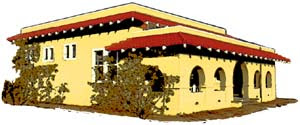By Dr. Kevin Starr, State Librarian of California
Los Angeles Times
SACRAMENTO — Amidst all the rancor and gloom surrounding the continuing budget stalemate, the cause of California history has gotten a boost.
Tucked into Proposition 40 was a provision authorizing $267 million for cultural and historical purposes. Gov. Gray Davis and the Legislature distributed half the money last summer. The remaining $128 million was intended for the California Cultural and Historical Endowment. This unprecedented and pioneering government entity — the Smithsonian Institution of California, it might be called — was the brainchild of Marco Firebaugh (D-L.A.) in the Assembly and John Burton (D-San Francisco) in the Senate. Their bill creating the endowment passed last summer and was signed by the governor. Then in May, Davis allocated the $128 million to the program.
For historians, preservationists, librarians, archivists and activists in the more than 350 historical societies in the state, the prospect of a permanent program, at the highest levels of government, devoted to the cause of California history is a truly exhilarating possibility. In one sense, the passage of Proposition 40, which included the historical funds, was a sign of the growing desire of the peoples of California — all the peoples in their varied historical experiences — to have their story told and, in telling that story, to assemble the larger narrative of California.
Thirty-four years ago, I completed my doctorate with an emphasis on the cultural history of California. There could be no greater contrast between our collective sense of California history — whether in the classroom or the popular imagination — then and now. The history of that time dealt with the Spanish and Mexican borderlands, followed by the Mission era, the Gold Rush and the creation of a predominately Anglo American state. While this history paid attention to literature, it was only in the first stages of acknowledging art, architecture and related cultural topics as historical forces. The stream of publications dealing with California was small but steady.
Today — thanks, in part, to a new generation of historians but also to the growing diversity of the state — the story of California has branched into dozens of directions. As befits a global culture, the history of our ethnic and cultural traditions has become a flourishing enterprise, as has the history of women in California. Historians pay closer attention to material culture and everyday life, to the role of technology, to education, art, architecture, gardening and landscape design, urban design and city-making, engineering and public works — and the all-important history of our environment. The publication stream has become a torrent. Equally impressive as formal scholarship is the rise of historical and preservationist activism at the statewide and local levels. We are entering, in fact, a golden age of historical awareness and activism.
Still, is it an exaggeration to compare the California Cultural and Historical Endowment to the Smithsonian Institution in Washington or the National Trust in Britain, or our own National Trust for Historic Preservation? Yes and no. Yes, this program will be dealing with large and important issues of cultural development. But it will be chiefly the peoples of California who will define, celebrate and preserve their histories. The Endowment must root in local historical societies and cultural groups that focus on the history and heritage of those omitted from the California story. It must see history, as much as possible, from the local perspective.
The program must be participatory but well-regulated, connected to the local level, where historical activism is so vital, yet adhering to the highest standards of statewide administration and statewide equity. But it must also be mindful of the powerful need at the core of the endowment. The people of California want their stories told, in their tragedies and triumphs, their grandeur and their textures of everyday life.
Such stories can be told through exhibitions in museums, historical societies, libraries, public galleries and similar venues. They can also be told through preservation in which significant places are set aside because they embody high and important moments in a group’s journey through identity. For some Japanese Americans, for example, the buildings in which Japanese American Army intelligence agents trained and worked in the immediate aftermath of Pearl Harbor — while most of their community was being rounded up and sent to internment camps — possess a deeply emotional and moral meaning. For African Americans in Los Angeles, there are places on Central Avenue that, though now bars or restaurants, embody the memory of jazz culture in Los Angeles and all that jazz has meant to the African American community across the decades. Caesar Chavez’s home is more than just another surviving California bungalow.
The legislation that created the California Cultural and Historical Endowment charges the State Library to develop it during in its initial phases. The State Library is already drawing up guidelines for a competitive grant process. Eventually, the endowment probably will stand on its own as a separate and continuing program.
The history and culture of California are important instances of American civilization, indeed of world culture. Now, the endowment will enable us to add many new textures and meanings to the story of California.
Dr. Starr wrote this op-ed piece to announce the beginning of a new entity in state government called the California Cultural and Historical Endowment.
Subscribe to:
Posts (Atom)



